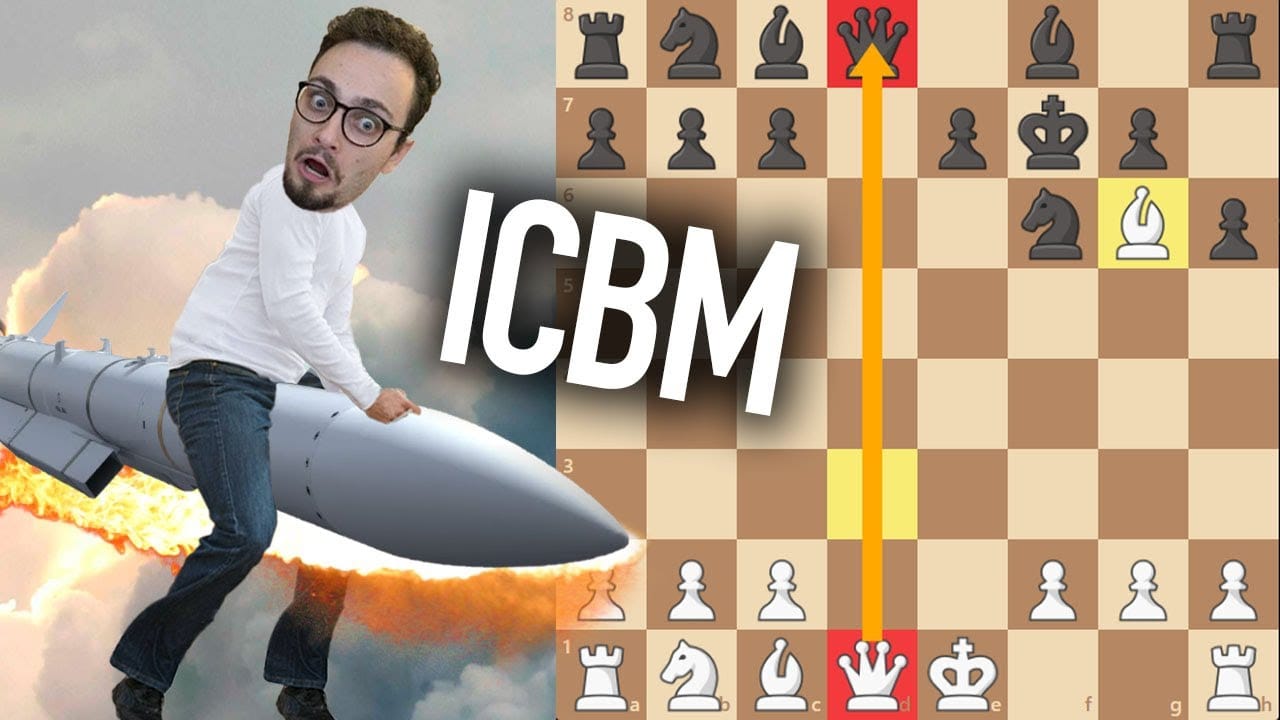Deciphering the Gambit: A Tactical Primer
The Intercontinental Ballistic Missile Gambit (ICBM Gambit), more commonly known as the Tennison Gambit, is a chess opening as bold and aggressive as its name suggests. It’s a game of calculated risks, where White sacrifices early material, typically a pawn, to fuel a rapid and potentially devastating attack. Think of it as a surprise military strike on the chessboard, aiming to catch Black off guard and seize a swift victory.
Tracing the Roots: From Tennison to “ICBMs”
While the moniker “ICBM Gambit” evokes images of modern warfare, the opening itself predates such technology. It’s named after Otto Mandrup Tennison, a 19th-century Danish-American chess enthusiast who favored this unorthodox opening. The “ICBM” label, likely coined in jest, highlights the gambit’s aggressive nature, likening its early pawn sacrifice to launching a missile at the heart of Black’s position.
The Anatomy of an Attack: Key Characteristics
- Early Pawn Sacrifice: White offers a pawn, usually on e4, to tempt Black into capturing it. This seemingly reckless move is a calculated gamble to open up lines for White’s pieces and disrupt Black’s development.
- Rapid Development: White prioritizes developing their pieces as quickly as possible, aiming to create immediate threats to Black’s king or other vulnerable targets.
- Tactical Complexity: The gambit often leads to imbalanced positions with open lines, creating opportunities for tactical combinations and sacrifices. Both sides must calculate carefully, as one mistake can swing the game decisively.
How to Play the ICBM Gambit: A Strategic Roadmap
- Nf3 d5: White opens with a flexible move, often seen in hypermodern openings, inviting Black to control the center with a pawn.
- e4: White immediately challenges Black’s central pawn, offering a pawn sacrifice to open up the position.
White’s Goals:
- Control the Center: Even with a pawn down, White strives to exert influence over the center of the board.
- Rapid Development: Developing knights and bishops quickly creates threats and puts pressure on Black’s position.
- Attack the King: White’s ultimate goal is to expose Black’s king and launch a decisive attack.
Black’s Responses:
Black has several options, each with its own set of risks and rewards:
- Accept the Gambit: Capturing the offered pawn can lead to sharp, tactical lines, but Black must be wary of falling into White’s traps.
- Decline the Gambit: Playing more conservatively, developing pieces, and consolidating the position might offer Black a more solid, strategic approach.
Is the ICBM Gambit Good? Weighing the Risks and Rewards
The effectiveness of the ICBM Gambit, like any chess opening, depends on several factors:
- Player Skill: It’s more suitable for players comfortable with tactical calculation and willing to embrace risks.
- Understanding the Variations: Mastering the ICBM’s nuances and potential pitfalls is crucial for success.
- Opponent’s Play: Black’s response and overall playing style significantly impact the gambit’s effectiveness.
Advantages:
- Quick Development: White gains a significant tempo advantage, developing pieces faster than usual.
- Attacking Potential: The open lines and unbalanced positions provide opportunities for swift and decisive attacks.
- Surprise Factor: The ICBM’s unconventional nature can catch opponents off guard, leading to psychological pressure.
Disadvantages:
- Material Disadvantage: White starts the game down a pawn, which can be a liability in the long run.
- Sharp Lines: The ICBM can lead to complex positions where one mistake can prove fatal.
- Counterattacks: Black has several ways to counter the gambit, potentially turning the tables on an unprepared White player.
The ICBM Gambit: A Legacy of Boldness and Innovation
Despite its unorthodox nature, the ICBM Gambit, also known as the Tennison Gambit, has earned its place in chess history. It’s a testament to the creativity and strategic depth of the game, showcasing the potential for bold ideas and calculated risks. While it may not be suitable for every player or every situation, the ICBM Gambit offers a thrilling and potentially rewarding experience for those who dare to unleash its explosive power on the chessboard.
- Crypto Quotes’ Red Flags: Avoid Costly Mistakes - June 30, 2025
- Unlock Inspirational Crypto Quotes: Future Predictions - June 30, 2025
- Famous Bitcoin Quotes: A Deep Dive into Crypto’s History - June 30, 2025

















1 thought on “Unveiling the Explosive ICBM Gambit: Your Guide to Chess Domination”
Comments are closed.